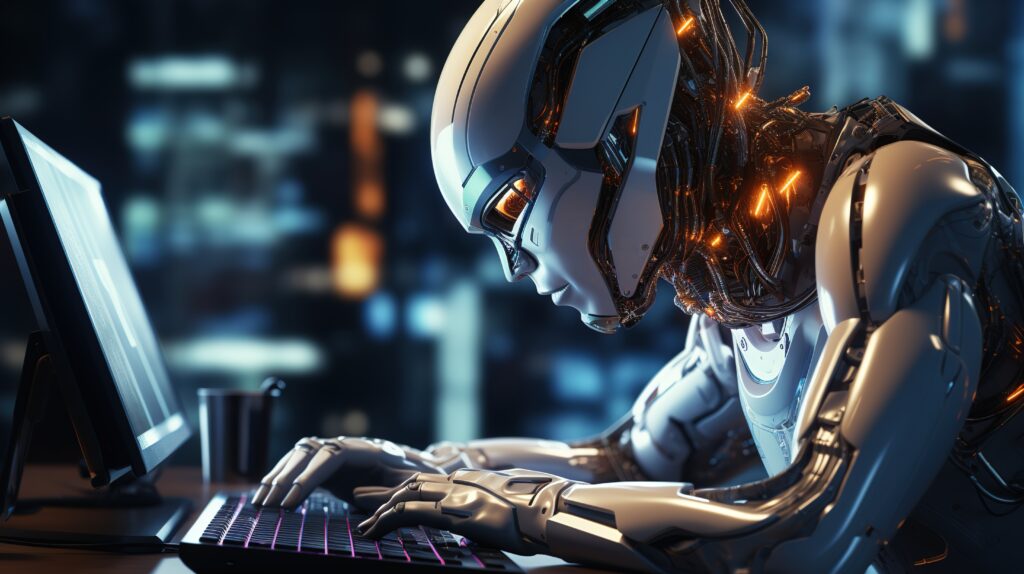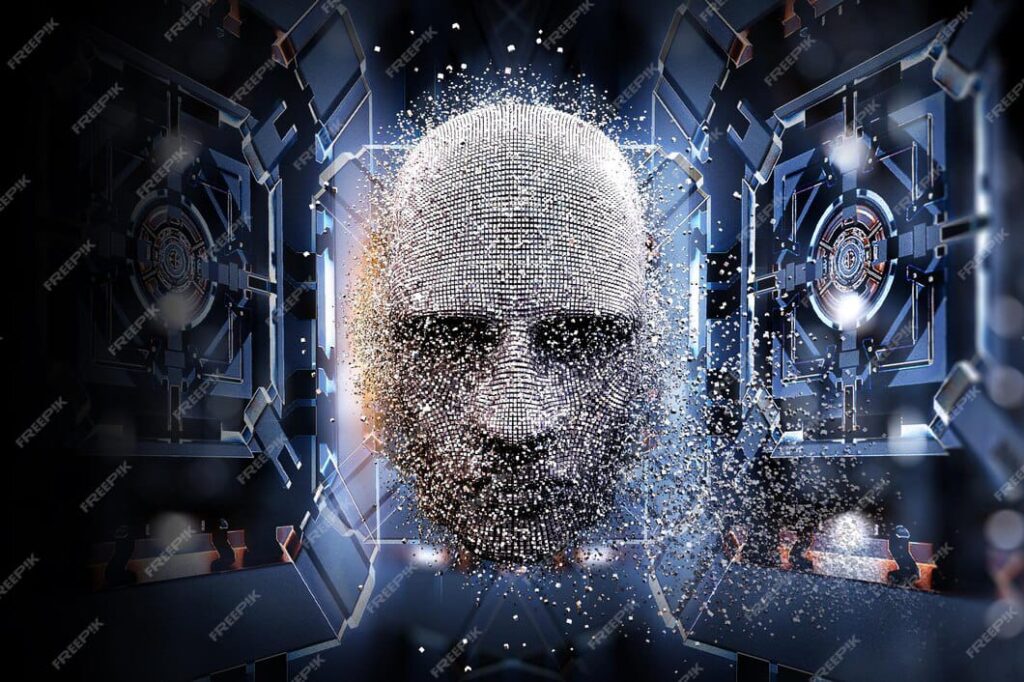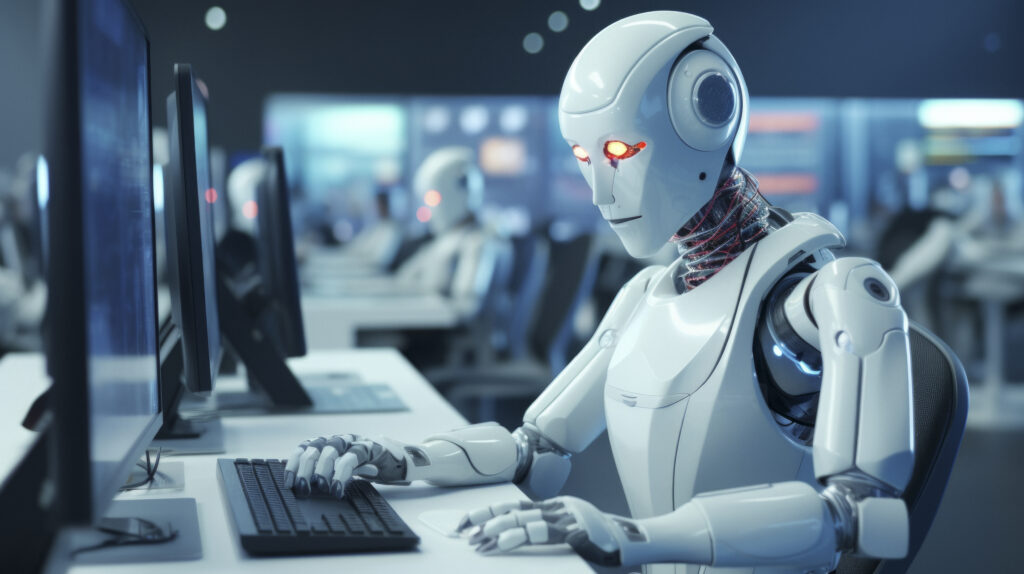In today’s post, we will tell you The Part of AI in Cybersecurity: Danger or Opportunity? Cybersecurity is one of the most basic concerns of our advanced age. As we proceed to coordinated innovation into about each perspective of our lives, the dangers related with cyber threats—such as information breaches, ransomware assaults, and personality theft—are developing exponentially. In reaction, the cybersecurity industry is always advancing, and one of the most promising apparatuses that has developed in later a long time is Fake Insights (AI).
But is AI a genuine resource in the battle against cybercrime, or does it present modern vulnerabilities that seem make us more vulnerable to assaults? In this article, we will investigate the part of AI in cybersecurity, its benefits and challenges, and whether it ought to be seen as a risk or an opportunity.
What is AI in Cybersecurity?
Artificial Insights (AI) alludes to machines or frameworks that are competent of performing assignments that ordinarily require human insights, such as learning, problem-solving, decision-making, and design acknowledgment. In cybersecurity, AI is utilized to analyze tremendous sums of information to distinguish designs, identify irregularities, and react to dangers speedier than conventional security methods.

AI-driven cybersecurity apparatuses are planned to upgrade existing defense frameworks and make modern arrangements to combat the expanding complexity of cyberattacks. These instruments can analyze arrange activity, client behavior, and framework logs, empowering them to recognize bizarre designs or noxious exercises that might something else go unnoticed.
How Does AI Work in Cybersecurity?
AI in cybersecurity fundamentally works through machine learning (ML), which is a subset of AI that permits frameworks to “learn” from information over time and make strides their execution without requiring express programming for each assignment. There are a few ways in which AI is connected in cybersecurity:
Threat Location and Anticipation: AI frameworks analyze organize activity, client behavior, and verifiable information to spot abnormal exercises or potential dangers. For occurrence, if an AI framework identifies an irregular spike in information exchanges from a specific server, it can consequently hail the movement as suspicious.
Anomaly Discovery: AI can be prepared to recognize what “typical” behavior looks like for clients, frameworks, or gadgets. When these designs are broken, the framework banners it as atypical, which may show a security risk like a hacking endeavor or a malware infection.
Automated Reaction: In the case of certain sorts of assaults, AI can trigger a programmed reaction, such as blocking a noxious IP address or separating a compromised arrange fragment, to restrain the harm. This computerized response can be much speedier than a human response.

Vulnerability Administration: AI can offer assistance distinguish vulnerabilities in a framework some time recently programmers do. By continually checking frameworks for potential security imperfections, AI makes a difference organizations fix vulnerabilities some time recently they are misused by attackers.
Phishing Discovery: AI is too utilized to recognize phishing emails and other shapes of social building. Machine learning calculations can analyze the dialect utilized in emails and distinguish ruddy banners such as suspicious joins, bizarre sender addresses, or other designs that flag phishing attempts.
Benefits of AI in Cybersecurity
The integration of AI into cybersecurity frameworks offers a few key benefits:
1. Speed and Efficiency
One of the essential points of interest of AI in cybersecurity is its speed. AI frameworks can analyze information in real-time, recognizing and reacting to dangers distant speedier than a human may. Given that cyberattacks can unfurl in a matter of seconds, this speed is significant in minimizing potential damage.
2. 24/7 Monitoring
Unlike human security groups, AI frameworks don’t require breaks, and they can work persistently without weakness. This 24/7 checking guarantees that potential dangers are recognized at any hour, giving consistent security for organizations and individuals.
3. Made strides Accuracy
AI’s capacity to handle endless sums of information can too lead to more exact risk location. By analyzing expansive volumes of organize activity, client behavior, and other information, AI can spot designs that might go unnoticed by conventional strategies, lessening the number of wrong positives and guaranteeing that security groups center on genuine threats.
4. Adaptability
AI frameworks can be prepared to adjust to modern dangers as they rise. Machine learning calculations can “learn” from past assaults, and ceaselessly move forward their capacity to identify and react to modern sorts of cyber dangers, making them more successful over time.
5. Scalability
As organizations develop, so does their advanced impression. The adaptability of AI-powered cybersecurity arrangements permits them to handle progressively complex systems and bigger datasets without requiring noteworthy human assets. This implies that AI can scale to meet the security needs of businesses of any size.
Challenges and Dangers of AI in Cybersecurity
While AI offers noteworthy benefits, its utilize in cybersecurity too presents a few challenges and dangers. These must be carefully considered when joining AI into a security procedure.

1. AI-Powered Cyberattacks
One of the greatest concerns approximately AI in cybersecurity is the potential for cybercriminals to utilize AI to dispatch more advanced assaults. Fair as AI can be utilized to protect against dangers, it can to be utilized by programmers to robotize assaults, discover vulnerabilities, and avoid location. For case, AI can be utilized to make exceedingly persuading phishing emails or to dispatch progressed determined dangers (APIs) that are troublesome to detect.
2. Predisposition and Wrong Positives
AI frameworks, particularly those fueled by machine learning, depend on information to make choices. If the information utilized to prepare an AI framework is one-sided or imperfect, the framework may make wrong forecasts, driving to untrue positives or negatives. For case, an AI framework might inaccurately hail authentic client behavior as a risk, causing superfluous disturbances or investigation.
3. Complexity and Cost
While AI can bring noteworthy efficiencies, it is moreover complex to actualize and keep up. Creating, preparing, and fine-tuning AI models requires gifted staff and can be exorbitant. Littler businesses or organizations with restricted assets might battle to coordinated AI viably into their cybersecurity strategy.
4. Protection Concerns
AI frameworks frequently require get to expansive sums of information to work viably, which can raise concerns almost information security. For illustration, in arrange to distinguish potential dangers, AI frameworks require screening client behavior and analyze endless sums of information around representatives or clients. This level of reconnaissance may strike with security directions, such as the Common Information Assurance Control (GDPR) in Europe.
5. Over-reliance on AI
There is a chance that organizations might have gotten to be excessively dependent on AI in their cybersecurity endeavors. Whereas AI is capable, it is not trustworthy, and it ought to not be seen as a substitute for human skill. Cybersecurity groups must work nearby AI frameworks to make the best choices and react to rising dangers effectively.
The Future of AI in Cybersecurity
The part of AI in cybersecurity is quickly advancing, and its future is filled with both guarantee and vulnerability. As innovation progresses, we can anticipate AI to gotten to be indeed more coordinates into cybersecurity operations. Machine learning models will likely get to be way better at identifying modern dangers, and AI will play a progressively critical part in computerizing risk responses.

However, as AI gets to be more modern, so will the strategies utilized by cybercriminals. The future of AI in cybersecurity will not as it were included moving forward guards but moreover creating procedures to combat AI-driven cyberattacks. Cybersecurity experts will require to remain ahead of the bend and persistently adjust to this ever-changing scene.
Conclusion:
AI is without a doubt changing the field of cybersecurity, advertising colossal potential to identify and react to cyber dangers more rapidly and precisely than ever some time recently. Its capacity to mechanize assignments, anticipate future dangers, and identify malware is revolutionizing how we ensure our computerized resources. Be that as it may, the same innovation moreover presents modern dangers, such as the plausibility of AI-powered cyberattacks, predispositions in calculations, and security concerns.
Ultimately, the part of AI in cybersecurity is not a matter of whether it is great or awful but or maybe how we utilize it. By saddling its control dependably, whereas remaining mindful of its impediments and potential threats, AI can be a profitable device in the battle against cybercrime. The future of cybersecurity will likely include a combination of human ability and AI-driven frameworks working together to make a more secure advanced world.
As we move forward, it will be significant for businesses, governments, and cybersecurity specialists to strike a adjust between advancement and caution, guaranteeing that AI is utilized to improve, or maybe than weaken, our security framework.
Read More

